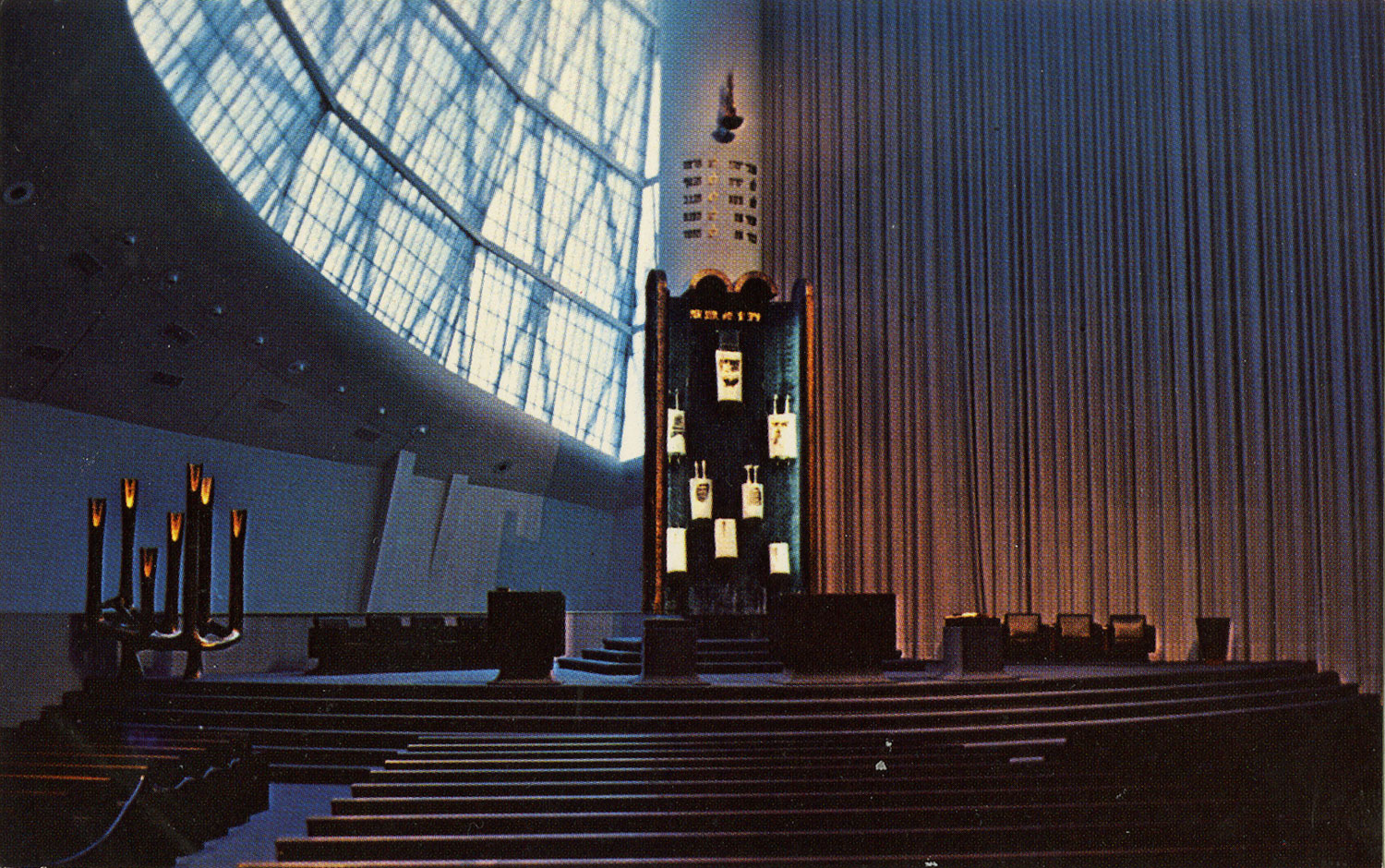In the decades following World War II, the synagogue underwent dramatic changes in its form and appearance. Most notably in America, where the largest number of synagogues was built, Modernism became the style of choice. Expressive Modernism, which favored varied shapes, curved forms, and often soaring spaces, began with the work of German-Jewish refugee Eric Mendelsohn (1887–1953) in the early 1950s and became widespread by the 1960s. New forms and materials created an entirely new look for Jewish houses of worship. In no place is this clearer than in the former sanctuary of B’nai Jehudah in Kansas City, Missouri, designed by the architectural firm of Kivett and Myers. The fourth home of the congregation, it is striking for its exterior profile and massing and its combination of natural and industrial forms to create an appearance rooted in both primeval nature and futuristic design.
From the outside, the synagogue had a striking style dominated by a prominent, asymmetrical roof that combines multiple materials with the opposition of straight edges and curves, resulting in a complete departure from traditional synagogue architecture. The inside, seen here in a postcard view, is a vast open space that seems to spring upward in a swirl of movement. The interior arrangement is quite simple, with a massive center support pole that also serves as the ark. Curtains draped around the low rear sections of the sanctuary can be opened to reveal expanded seating. There is a central plan set beneath a dome of sorts, but the bimah is pushed to the edge, around the center pole. On the bimah is a large bronze menorah, an eternal light, and the ark itself, all designed by local artist Norman Brunelli.
Founded in 1870, Reform Congregation B’nai Jehudah is the oldest Jewish congregation in the Kansas City metropolitan area. When the synagogue was completed in 1969, it was deemed a modern landmark. Nonetheless, as a sign of changing tastes and shifting Jewish settlement patterns, the building was demolished after the congregation relocated to suburban Overland Park in 2000.
